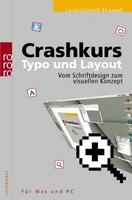Subject
photo credits: Wikimedia Commons
Adobe InDesign is a desktop publishing and page layout designing software application produced by Adobe and first released in 1999. It can be used to create works such as posters, flyers, brochures, magazines, newspapers, presentations, books and ebooks. InDesign can also publish content suitable for tablet devices in conjunction with Adobe Digital Publishing Suite. Graphic designers and production artists are the principal users. InDesign is the successor to Adobe PageMaker, which Adobe acquired by buying Aldus Corporation in late 1994. (Freehand, Aldus's competitor to Adobe Illustrator, was licensed from Altsys, the maker of Fontographer.) By 1998 PageMaker had lost much of professional market to the comparatively feature-rich QuarkXPress version 3.3, released in 1992, and version 4.0, released in 1996. In 1999, Quark announced its offer to buy Adobe and to divest the combined company of PageMaker to avoid problems under United States antitrust law. Adobe declined Quark's offer and continued to develop a new desktop publishing application. Aldus had begun developing a successor to PageMaker, which was code-named "Shuksan". Later, Adobe code-named the project "K2", and Adobe released InDesign 1.0 in 1999. InDesign exports documents in Adobe's Portable Document Format (PDF) and supports multiple languages. It was the first DTP application to support Unicode character sets, advanced typography with OpenType fonts, advanced transparency features, layout styles, optical margin alignment, and cross-platform scripting with JavaScript. Later versions of the software introduced new file formats. To support the new features, especially typographic, introduced with InDesign CS, both the program and its document format are not backward-compatible. Instead, InDesign CS2 introduced the INX (.inx) format, an XML-based document representation, to allow backwards compatibility with future versions. InDesign CS versions updated with the 3.1 April 2005 update can read InDesign CS2-saved files exported to the .inx format. The InDesign Interchange format does not support versions earlier than InDesign CS. With InDesign CS4, Adobe replaced INX with InDesign Markup Language (IDML), another XML-based document representation. InDesign was the first native Mac OS X publishing software. With the third major version, InDesign CS, Adobe increased InDesign's distribution by bundling it with Adobe Photoshop, Adobe Illustrator, and Adobe Acrobat in Adobe Creative Suite. Adobe developed InDesign CS3 (and Creative Suite 3) as universal binary software compatible with native Intel and PowerPC Macs in 2007, two years after the announced 2005 schedule, inconveniencing early adopters of Intel-based Macs. Adobe CEO Bruce Chizen had announced that "Adobe will be first with a complete line of universal applications". Source: Wikipedia (en)
Works about Adobe InDesign 1
Subject - wd:Q218924
